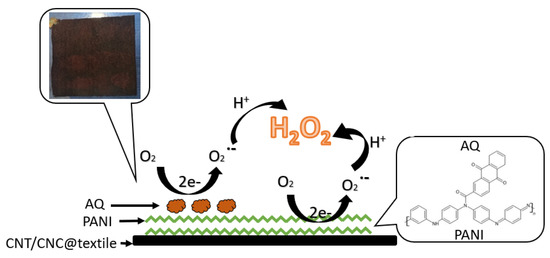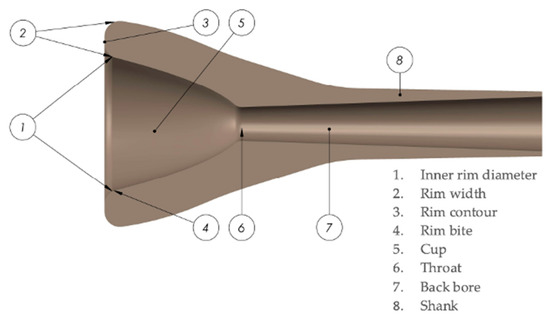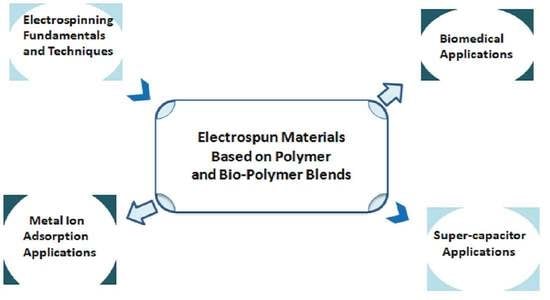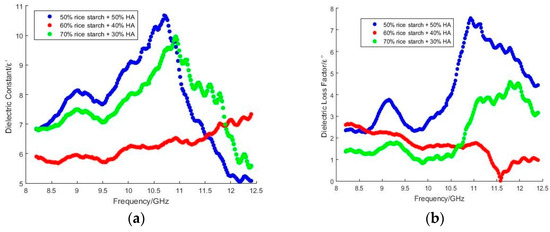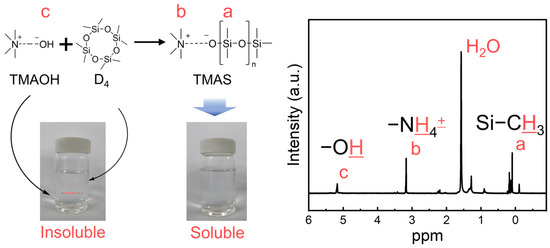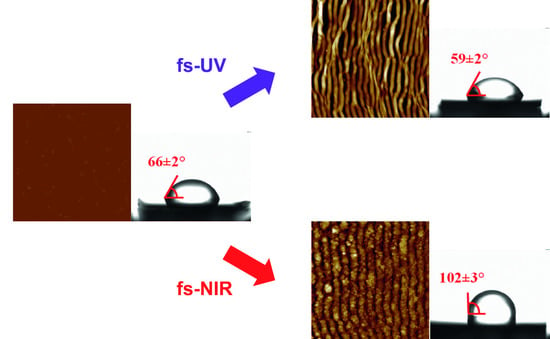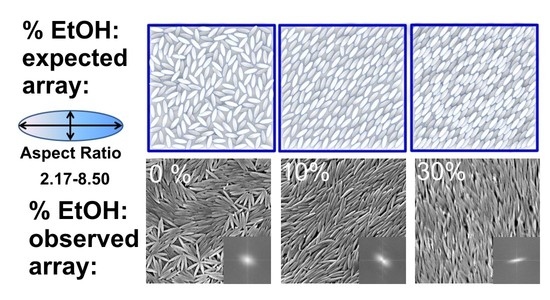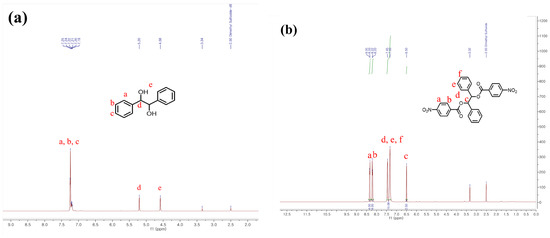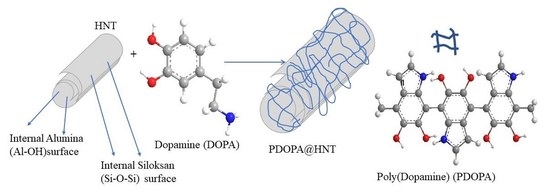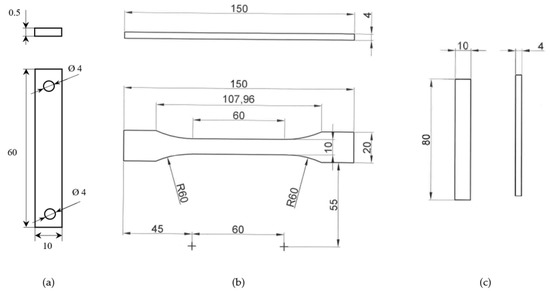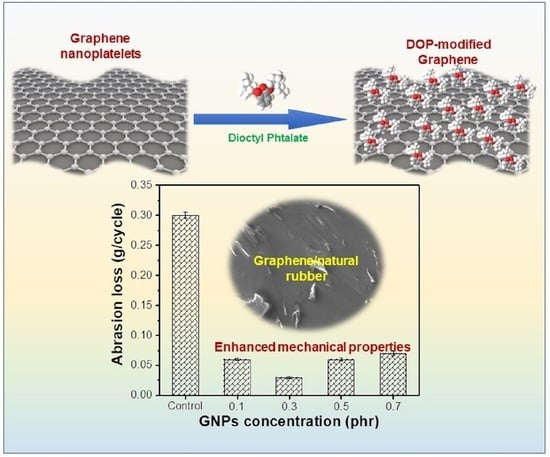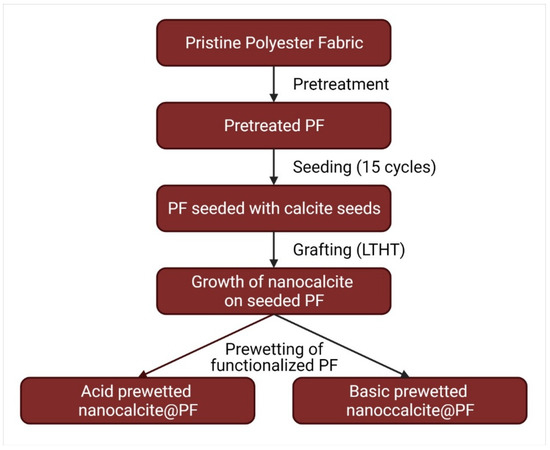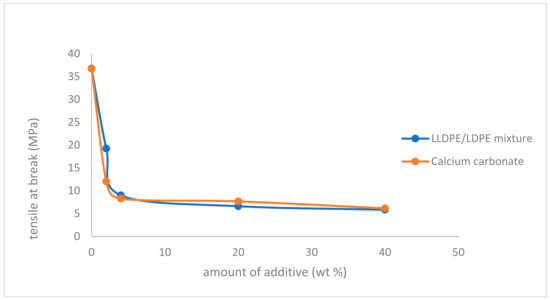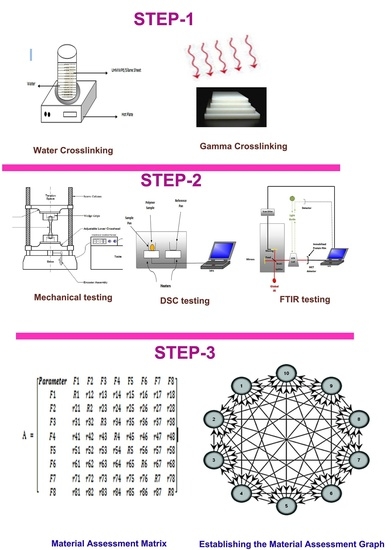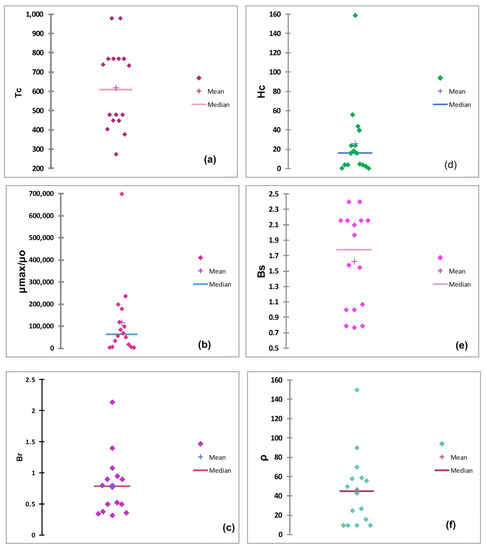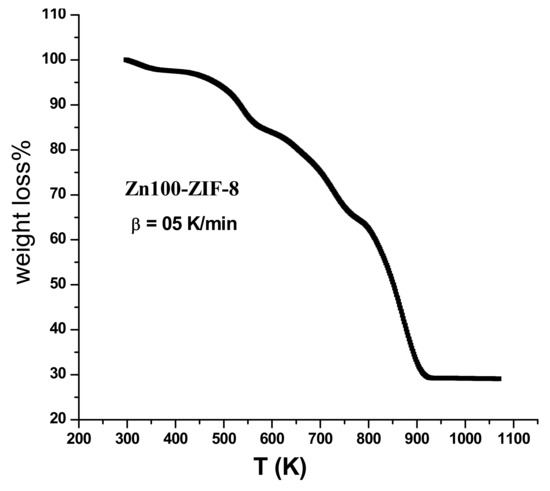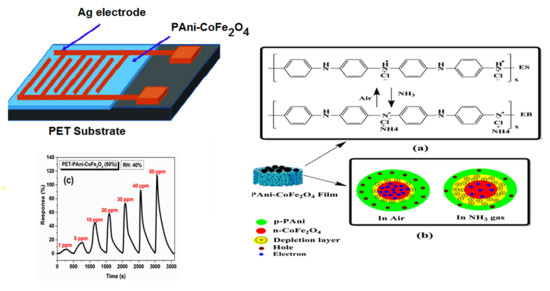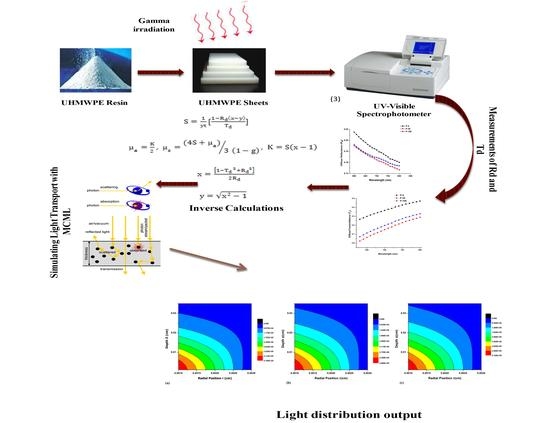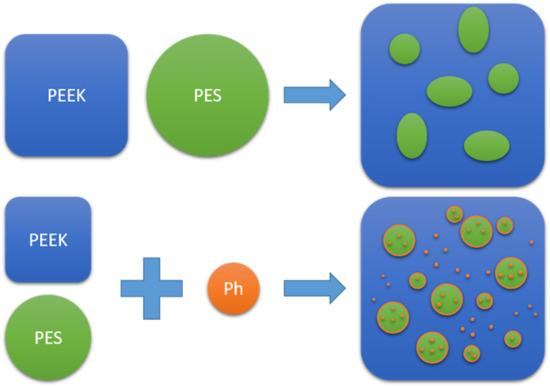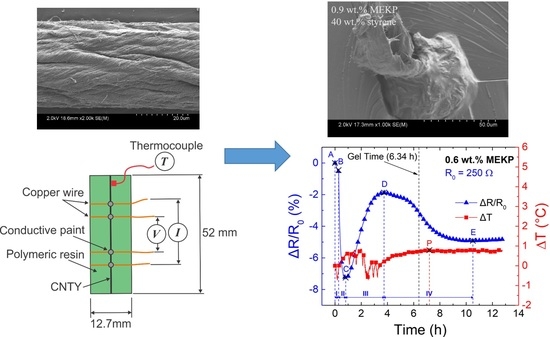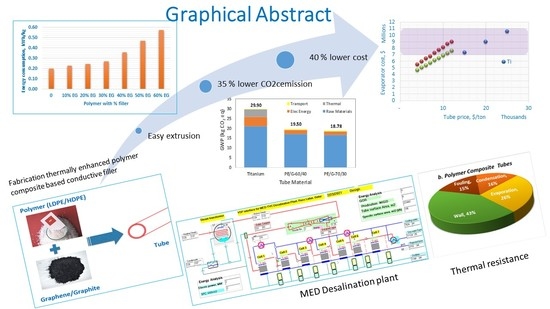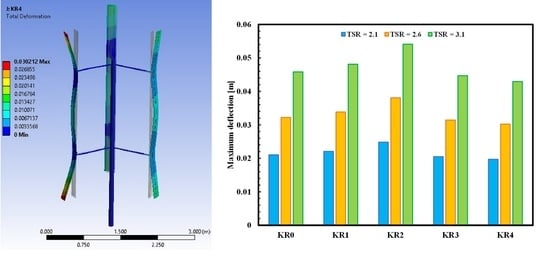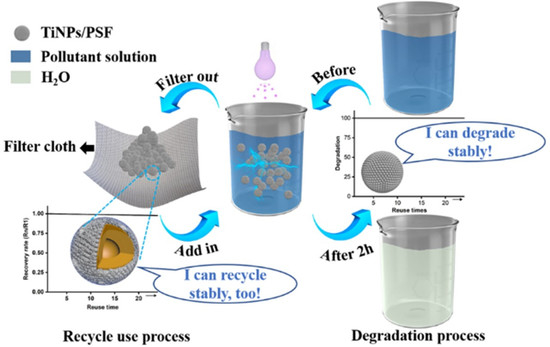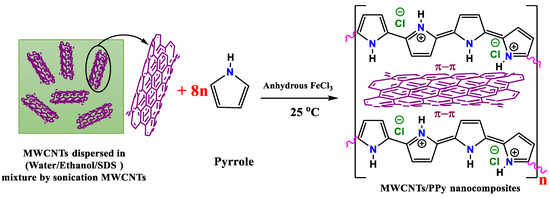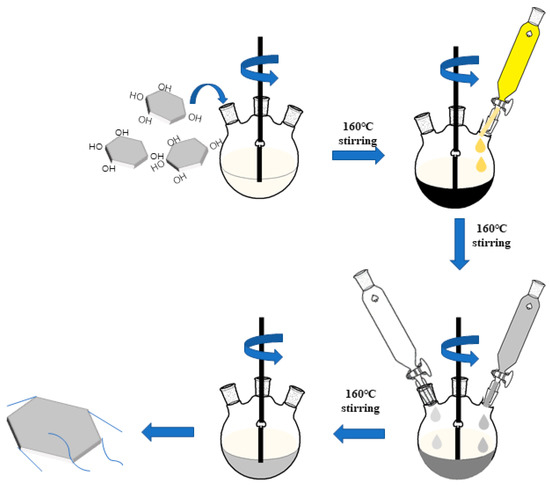Advances in Polymeric Composites
(Closed)
Share This Topical Collection
Editor
Topical Collection Information
Dear Colleagues,
Recently, there has been growing interest in the use of polymer composite systems in science and engineering applications. Their potential for high volume processing combined with high levels of end use property levels and associated unique properties have spurred the current expansion of research and development activities on polymeric composite materials. Because of their superior properties, they have attracted large-volume markets of membrane technology, aerospace, biomedical, automotive, marine, sport, and leisure industries. The high melt viscosity and poor interfacial force are the main challenges in the processing of fillers/polymer composites. Therefore, the use of functionalized materials would play a crucial role in the dispersed phase/matrix interfacial force. In most of these applications, the physical and mechanical properties of polymers are modified using functional dispesed phases, such as fillers and fibers, in order to tailor the superior propoerties. Functionl polymer composites and carbon-based polymers can provide advantages over other conventional filler when mechanical, electrical, and chemical properties are compared. In this collection, functionalized materials and carbon-based materials that are incorporated in biopolymer and syntheic polymers by mixing with different loadings and techniques for several applications will be focused on. The effect of each filler along with the hybrid combination on the mechanical, physical, and electrical properties of the polymer composites will be presented. Special attention will be given to the following aspects:
- Novel polymer composites
- Development of polymer composites and their properties
- Polymer biocomposites and their applications
- Applications of polymer composites in renewable energy
- Applications of polymer composites in aerospace, biomedical, automotive, marine, sport, and leisure industries
- Applications of polymer composites in membrane technology and water treatment
- Natural and synthetic polymers
- Fly ash-based polymer matrix composites
- Metal–organic frameworks (MOFs)—polymer hybrid materials
- Progress in the synthesis, processing, and applications of polymer nanocomposites
- Graphene-based polymer matrix composites
Both original research papers and comprehensive reviews are welcome. We look forward to your exciting contributions.
Prof. Dr. Mohamd Bassyouni
Guest Editor
Manuscript Submission Information
Manuscripts should be submitted online at www.mdpi.com by registering and logging in to this website. Once you are registered, click here to go to the submission form. Manuscripts can be submitted until the deadline. All submissions that pass pre-check are peer-reviewed. Accepted papers will be published continuously in the journal (as soon as accepted) and will be listed together on the collection website. Research articles, review articles as well as short communications are invited. For planned papers, a title and short abstract (about 100 words) can be sent to the Editorial Office for announcement on this website.
Submitted manuscripts should not have been published previously, nor be under consideration for publication elsewhere (except conference proceedings papers). All manuscripts are thoroughly refereed through a single-blind peer-review process. A guide for authors and other relevant information for submission of manuscripts is available on the Instructions for Authors page. Polymers is an international peer-reviewed open access semimonthly journal published by MDPI.
Please visit the Instructions for Authors page before submitting a manuscript.
The Article Processing Charge (APC) for publication in this open access journal is 2700 CHF (Swiss Francs).
Submitted papers should be well formatted and use good English. Authors may use MDPI's
English editing service prior to publication or during author revisions.
Keywords
- membrane
- adsorption
- nanotechnology
- water treatment
- functional materials
- graphene
- CNTs
- MOFs
- polymer composites
Related Special Issues
Published Papers (36 papers)
Open AccessFeature PaperReview
Advances in Organic–Inorganic Hybrid Latex Particles via In Situ Emulsion Polymerization
by
Yubin Wang, Baojiang Sun, Zhiwei Hao and Jianhua Zhang
Cited by 7 | Viewed by 2303
Abstract
Hybrid latex particles combine the unique properties of inorganic nano/micro particles with the inherent properties of polymers, exhibiting tremendous potential for a variety of applications. Recent years have witnessed an increased interest in the design and preparation of hybrid latex particles with well-defined
[...] Read more.
Hybrid latex particles combine the unique properties of inorganic nano/micro particles with the inherent properties of polymers, exhibiting tremendous potential for a variety of applications. Recent years have witnessed an increased interest in the design and preparation of hybrid latex particles with well-defined size, structure and morphology. Due to its simplicity, versatility and environmental friendliness, the in situ (Pickering) emulsion polymerization has been demonstrated to be a powerful approach for the large-scale preparation of hybrid latex particles. In this review, the strategies and applications of in situ (Pickering) emulsion polymerization for the preparation of hybrid latex particles are systematically summarized. A particular focus is placed on the strategies for the preparation of hybrid latex particles with enhanced properties and well-defined core–shell, yolk–shell, multinuclear, raspberry-like, dumbbell-shaped, multipod-like or armored morphologies. We hope that the considerable advances, examples and principles presented in this review can motivate future contributions to provide a deeper understanding of current preparation technologies, develop new processes, and enable further exploitation of hybrid latex particles with outstanding characteristics and properties.
Full article
►▼
Show Figures
Open AccessArticle
Anthraquinone-Polyaniline-Integrated Textile Platforms for In Situ Electrochemical Production of Hydrogen Peroxide for Microbial Deactivation
by
Samuel M. Mugo, Weihao Lu and Scott Robertson
Viewed by 908
Abstract
Hydrogen peroxide (H
2O
2) is a versatile and effective disinfectant against common pathogenic bacteria such as
Escherichia coli (
E. coli). Electrochemical H
2O
2 generation has been studied in the past, but a lack of studies exists
[...] Read more.
Hydrogen peroxide (H
2O
2) is a versatile and effective disinfectant against common pathogenic bacteria such as
Escherichia coli (
E. coli). Electrochemical H
2O
2 generation has been studied in the past, but a lack of studies exists on miniaturized electrochemical platforms for the on-demand synthesis of H
2O
2 for antibacterial applications. In this article, a chemically modified cotton textile platform capable of in situ H
2O
2 production is demonstrated for
E. coli deactivation. The cotton textile was modified by layer-by-layer coating with conductive carbon nanotubes/cellulose nanocrystals (CNT/CNC) and a polymer of polyaniline (PANI) decorated with anthraquinone (AQ), designated as the AQ@PANI@CNT/CNC@textile antibacterial patch. The AQ@PANI@CNT/CNC@textile antibacterial textile patch H
2O
2 production capabilities were evaluated using both electrochemical and colorimetric methods. The AQ@PANI@CNT/CNC@textile antibacterial patch electrochemically produced H
2O
2 concentrations up to 209 ± 25 µM over a 40 min period and displayed a log reduction of 3.32 for
E. coli over a period of 2 h. The AQ@PANI@CNT/CNC@textile antibacterial patch offers promise for use as a self-disinfecting pathogen control platform.
Full article
►▼
Show Figures
Open AccessArticle
Design, Manufacturing and Acoustic Assessment of Polymer Mouthpieces for Trombones
by
Juan C. Rodríguez, Romina del Rey, Miguel A. Peydro, Jesús Alba and Juan L. Gámez
Cited by 1 | Viewed by 1206
Abstract
Brass instruments mouthpieces have been historically built using metal materials, usually brass. With the auge of additive manufacturing technologies new possibilities have arisen, both for testing alternative designs and for using new materials. This work assesses the use of polymers for manufacturing trombone
[...] Read more.
Brass instruments mouthpieces have been historically built using metal materials, usually brass. With the auge of additive manufacturing technologies new possibilities have arisen, both for testing alternative designs and for using new materials. This work assesses the use of polymers for manufacturing trombone mouthpieces, specifically PLA and Nylon. The acoustical behavior of these two mouthpieces has been compared with the obtained from a third one, built from brass. Both additive and subtractive manufacturing techniques were used, and the whole manufacturing process is described. The mouthpieces were acoustically assessed in an anechoic chamber with the collaboration of a professional performer. The harmonic analysis confirmed that all the manufactured mouthpieces respect the harmonic behavior of the instrument. An energy analysis of the harmonics revealed slight differences between the mouthpieces, which implies differences in the timbre of the instrument. Although these subtle differences would not be acceptable when performing with the instrument in an orchestra, they could be perfectly valid for early learners, personal rehearsals or any kind of alternative performance.
Full article
►▼
Show Figures
Open AccessReview
Electrospun Materials Based on Polymer and Biopolymer Blends—A Review
by
Muhammad Tahir, Silvia Vicini and Alina Sionkowska
Cited by 7 | Viewed by 3037
Abstract
This review covers recent developments and progress in polymer and biopolymer blending and material preparation by electrospinning. Electrospinning is a technique that is used to produce nanofibers to improve the quality of membranes. Electrospun nanofibers are highly applicable in biomedical sciences, supercapacitors, and
[...] Read more.
This review covers recent developments and progress in polymer and biopolymer blending and material preparation by electrospinning. Electrospinning is a technique that is used to produce nanofibers to improve the quality of membranes. Electrospun nanofibers are highly applicable in biomedical sciences, supercapacitors, and in water treatment following metal ion adsorption. The key affecting factors of electrospinning have been checked in the literature to obtain optimal conditions of the electrospinning process. Future research directions and outlooks have been suggested to think about innovative ideas for research in this field.
Full article
►▼
Show Figures
Open AccessArticle
Stabilized Reversed Polymeric Micelles as Nanovector for Hydrophilic Compounds
by
Mariacristina Gagliardi, Agnese Vincenzi, Laura Baroncelli and Marco Cecchini
Cited by 1 | Viewed by 1352
Abstract
Small hydrophilic drugs are widely used for systemic administration, but they suffer from poor absorption and fast clearance. Their nanoencapsulation can improve biodistribution, targeted delivery, and pharmaceutical efficacy. Hydrophilics are effectively encapsulated in compartmented particles, such as liposomes or extracellular vesicles, which are
[...] Read more.
Small hydrophilic drugs are widely used for systemic administration, but they suffer from poor absorption and fast clearance. Their nanoencapsulation can improve biodistribution, targeted delivery, and pharmaceutical efficacy. Hydrophilics are effectively encapsulated in compartmented particles, such as liposomes or extracellular vesicles, which are biocompatible but poorly customizable. Polymeric vectors can form compartmental structures, also being functionalizable. Here, we report a system composed of polymeric stabilized reversed micelles for hydrophilic drugs encapsulation. We optimized the preparation procedure, and calculated the critical micellar concentration. Then, we developed a strategy for stabilization that improves micelle stability upon dilution. We tested the drug loading and delivery capabilities with creatine as a drug molecule. Prepared stabilized reversed micelles had a size of around 130 nm and a negative z-potential around −16 mV, making them functional as a drug carrier. The creatine cargo increased micelle size and depended on the loading conditions. The higher amount of loaded creatine was around 60 μg/mg of particles. Delivery tests indicated full release within three days in micelles with the lower cargo, while higher loadings can provide a sustained release for longer times. Obtained results are interesting and encouraging to test the same system with different drug cargoes.
Full article
►▼
Show Figures
Open AccessArticle
Lumped-Element Circuit Modeling for Composite Scaffold with Nano-Hydroxyapatite and Wangi Rice Starch
by
Xiao Jian Tan, Ee Meng Cheng, Nashrul Fazli Mohd Nasir, Mohd Shukry Abdul Majid, Mohd Ridzuan Mohd Jamir, Shing Fhan Khor, Kim Yee Lee, Kok Yeow You and Che Wan Sharifah Robiah Mohamad
Viewed by 1429
Abstract
Mechanistic studies of the interaction of electromagnetic (EM) fields with biomaterials has motivated a growing need for accurate models to describe the EM behavior of biomaterials exposed to these fields. In this paper, biodegradable bone scaffolds were fabricated using Wangi rice starch and
[...] Read more.
Mechanistic studies of the interaction of electromagnetic (EM) fields with biomaterials has motivated a growing need for accurate models to describe the EM behavior of biomaterials exposed to these fields. In this paper, biodegradable bone scaffolds were fabricated using Wangi rice starch and nano-hydroxyapatite (nHA). The effects of porosity and composition on the fabricated scaffold were discussed via electrical impedance spectroscopy analysis. The fabricated scaffold was subjected to an electromagnetic field within the X-band and Ku-band (microwave spectrum) during impedance/dielectric measurement. The impedance spectra were analyzed with lumped-element models. The impedance spectra of the scaffold can be embodied in equivalent circuit models composed of passive components of the circuit, i.e., resistors, inductors and capacitors. It represents the morphological, structural and chemical characteristics of the bone scaffold. The developed models describe the impedance characteristics of plant tissue. In this study, it was found that the ε′ and ε″ of scaffold composites exhibited up and down trends over frequencies for both X-band and Ku-band. The circuit models presented the lowest mean percentage errors of Z′ and Z″, i.e., 3.60% and 13.80%, respectively.
Full article
►▼
Show Figures
Open AccessArticle
Optimization and Characterization of the F-LSR Manufacturing Process Using Quaternary Ammonium Silanolate as an Initiator for Synthesizing Fluorosilicone
by
Jae Il So, Chung Soo Lee, Ji Young Jung, Jaewon Lee, Jin Kyu Choi, Sang Eun Shim and Yingjie Qian
Viewed by 1683
Abstract
Due to the growing demand for versatile hybrid materials that can withstand harsh conditions (below −40 °C), fluorosilicone copolymers are becoming promising materials that can overcome the limited operating temperature of conventional rubber. In order to synthesize a fluorosilicone copolymer, a potent initiator
[...] Read more.
Due to the growing demand for versatile hybrid materials that can withstand harsh conditions (below −40 °C), fluorosilicone copolymers are becoming promising materials that can overcome the limited operating temperature of conventional rubber. In order to synthesize a fluorosilicone copolymer, a potent initiator capable of simultaneously initiating various siloxane monomers in anionic ring-opening polymerization (AROP) is required. In this study, tetramethyl ammonium silanolate (TMAS), a quaternary ammonium (QA) anion, was employed as an initiator for AROP, thereby fluoro-methyl-vinyl-silicone (FVMQ) and fluoro-hydrido-methyl-silicone (FHMQ) were successfully synthesized under optimized conditions. FT-IR, NMR, and GPC analyses confirmed that the chain length and functional group content of FVMQ and FHMQ are controlled by changing the ratio of the components. Moreover, fluorine-involved liquid silicone rubber (F-LSR) was prepared with FVMQ as the main chain and FHMQ as a crosslinker. The tensile strength, elongation, and hardness of each F-LSR sample were measured. Finally, it was confirmed through TGA, DSC, TR-test, and embrittlement testing that elastic retention at low temperatures improved even though the heat resistance slightly decreased as the trifluoropropyl group increased in F-LSR. We anticipate that the optimization of fluorosilicone synthesis initiated by QA and the comprehensive characterization of F-LSRs with different fluorine content and chain lengths will be pivotal to academia and industry.
Full article
►▼
Show Figures
Open AccessArticle
Evaluation of the Strength of the Interface for Abaca Fiber Reinforced Hdpe and Biope Composite Materials, and Its Influence over Tensile Properties
by
Faust Seculi, Francesc X. Espinach, Fernando Julián, Marc Delgado-Aguilar, Pere Mutjé and Quim Tarrés
Cited by 10 | Viewed by 1599
Abstract
In this study, tensile properties of abaca-reinforced HDPE and BioPE composites have been researched. The strength of the interface between the matrix and the reinforcement of a composite material noticeably impacts its mechanical properties. Thus, the strength of the interface between the reinforcements
[...] Read more.
In this study, tensile properties of abaca-reinforced HDPE and BioPE composites have been researched. The strength of the interface between the matrix and the reinforcement of a composite material noticeably impacts its mechanical properties. Thus, the strength of the interface between the reinforcements and the matrices has been studied using micromechanics models. Natural fibers are hydrophilic and the matrices are hydrophobic, resulting in weak interfaces. In the study, a coupling agent based on polyethylene functionalised with maleic acid was used, to increase the strength of the interface. The results show that 8 wt% coupling agent contents noticeably increased the tensile strength of the composites and the interface. Tensile properties obtained for HDPE and BioPE-based coupled composites were statistically similar or better for BioPE-based materials. The use of bio-based matrices increases the possibility of decreasing the environmental impact of the materials, obtaining fully bio-based composites. The article shows the ability of fully bio-based composites to replace others using oil-based matrices.
Full article
►▼
Show Figures
Open AccessArticle
Physicochemical Modifications on Thin Films of Poly(Ethylene Terephthalate) and Its Nanocomposite with Expanded Graphite Nanostructured by Ultraviolet and Infrared Femtosecond Laser Irradiation
by
René I. Rodríguez-Beltrán, Javier Prada-Rodrigo, Ana Crespo, Tiberio A. Ezquerra, Pablo Moreno and Esther Rebollar
Cited by 4 | Viewed by 1738
Abstract
In this work, the formation of laser-induced periodic surface structures (LIPSS) on the surfaces of thin films of poly(ethylene terephthalate) (PET) and PET reinforced with expanded graphite (EG) was studied. Laser irradiation was carried out by ultraviolet (265 nm) and near-infrared (795 nm)
[...] Read more.
In this work, the formation of laser-induced periodic surface structures (LIPSS) on the surfaces of thin films of poly(ethylene terephthalate) (PET) and PET reinforced with expanded graphite (EG) was studied. Laser irradiation was carried out by ultraviolet (265 nm) and near-infrared (795 nm) femtosecond laser pulses, and LIPSS were formed in both materials. In all cases, LIPSS had a period close to the irradiation wavelength and were formed parallel to the polarization of the laser beam, although, in the case of UV irradiation, differences in the formation range were observed due to the different thermal properties of the neat polymer in comparison to the composite. To monitor the modification of the physicochemical properties of the surfaces after irradiation as a function of the laser wavelength and of the presence of the filler, different techniques were used. Contact angle measurements were carried out using different reference liquids to measure the wettability and the solid surface free energies. The initially hydrophilic surfaces became more hydrophilic after ultraviolet irradiation, while they evolved to become hydrophobic under near-infrared laser irradiation. The values of the surface free energy components showed changes after nanostructuring, mainly in the polar component. Additionally, for UV-irradiated surfaces, adhesion, determined by the colloidal probe technique, increased, while, for NIR irradiation, adhesion decreased. Finally, nanomechanical properties were measured by the PeakForce Quantitative Nanomechanical Mapping method, obtaining maps of elastic modulus, adhesion, and deformation. The results showed an increase in the elastic modulus in the PET/EG, confirming the reinforcing action of the EG in the polymer matrix. Additionally, an increase in the elastic modulus was observed after LIPSS formation.
Full article
►▼
Show Figures
Open AccessArticle
Protein Adsorption Performance of a Novel Functionalized Cellulose-Based Polymer
by
Diana Gago, Marta C. Corvo, Ricardo Chagas, Luísa M. Ferreira and Isabel Coelhoso
Cited by 4 | Viewed by 1811
Abstract
Dicarboxymethyl cellulose (DCMC) was synthesized and tested for protein adsorption. The prepared polymer was characterized by inductively coupled plasma atomic emission spectrometry (ICP-AES), attenuated total reflection Fourier-transform infrared spectroscopy (ATR-FTIR) and solid state nuclear magnetic resonance (ssNMR) to confirm the functionalization of cellulose.
[...] Read more.
Dicarboxymethyl cellulose (DCMC) was synthesized and tested for protein adsorption. The prepared polymer was characterized by inductively coupled plasma atomic emission spectrometry (ICP-AES), attenuated total reflection Fourier-transform infrared spectroscopy (ATR-FTIR) and solid state nuclear magnetic resonance (ssNMR) to confirm the functionalization of cellulose. This work shows that protein adsorption onto DCMC is charge dependent. The polymer adsorbs positively charged proteins, cytochrome C and lysozyme, with adsorption capacities of 851 and 571 mg g
−1, respectively. In both experiments, the adsorption process follows the Langmuir adsorption isotherm. The adsorption kinetics by DCMC is well described by the pseudo second-order model, and adsorption equilibrium was reached within 90 min. Moreover, DCMC was successfully reused for five consecutive adsorption–desorption cycles, without compromising the removal efficiency (98–99%).
Full article
►▼
Show Figures
Open AccessArticle
New Class of Polymer Materials—Quasi-Nematic Colloidal Particle Self-Assemblies: The Case of Assemblies of Prolate Spheroidal Poly(Styrene/Polyglycidol) Particles
by
Damian Mickiewicz, Mariusz Gadzinowski, Tomasz Makowski, Witold Szymański, Stanislaw Slomkowski and Teresa Basinska
Viewed by 1191
Abstract
Assemblies of colloidal polymer particles find various applications in many advanced technologies. However, for every type of application, assemblies with properly tailored properties are needed. Until now, attention has been concentrated on the assemblies composed of spherical particles arranged into so-called perfect colloidal
[...] Read more.
Assemblies of colloidal polymer particles find various applications in many advanced technologies. However, for every type of application, assemblies with properly tailored properties are needed. Until now, attention has been concentrated on the assemblies composed of spherical particles arranged into so-called perfect colloidal crystals and on complex materials containing mixtures of crystal and disordered phases. However, new opportunities are opened by using assemblies of spheroidal particles. In such assemblies, the particles, in addition to the three positional have three angular degrees of freedom. Here, the preparation of 3D assemblies of reference microspheres and prolate spheroidal poly(styrene/polyglycidol) microparticles by deposition from water and water/ethanol media on silicon substrates is reported. The particles have the same polystyrene/polyglycidol composition and the same volumes but differ with respect to their aspect ratio (
AR) ranged from 1 to 8.5. SEM microphotographs reveal that particles in the assembly top layers are arranged into the quasi-nematic structures and that the quality of their orientation in the same direction increase with increasing
AR. Nano- and microindentation studies demonstrate that interactions of sharp and flat tips with arrays of spheroidal particles lead to different types of particle deformations.
Full article
►▼
Show Figures
Open AccessArticle
A Novel Diamine Containing Ester and Diphenylethane Groups for Colorless Polyimide with a Low Dielectric Constant and Low Water Absorption
by
Jun Seok Lee, Yong-Zhu Yan, Sung Soo Park, Suk-kyun Ahn and Chang-Sik Ha
Cited by 6 | Viewed by 2181
Abstract
In this study, a novel diamine monomer containing ester and phenyl moieties, 1,2-diphenylethane-1,2-diyl bis(4-aminobenzoate) (1,2-DPEDBA), was synthesized through a three-step reaction. Using this diamine, a novel polyimide (PI) film was prepared with 4,4′-(hexafluoroisopropylidene)diphthalic anhydride (6-FDA) as a counter dianhydride through a typical two-step
[...] Read more.
In this study, a novel diamine monomer containing ester and phenyl moieties, 1,2-diphenylethane-1,2-diyl bis(4-aminobenzoate) (1,2-DPEDBA), was synthesized through a three-step reaction. Using this diamine, a novel polyimide (PI) film was prepared with 4,4′-(hexafluoroisopropylidene)diphthalic anhydride (6-FDA) as a counter dianhydride through a typical two-step chemical imidization. For comparison, poly(pyromellitic dianhydride-co-4,4′-oxydianiline) (PMDA-ODA PI) was also synthesized via thermal imidization. The resulting 6-FDA-DPEDBA PI film was not only soluble in common polar solvents with high boiling points, such as N,N-dimethylacetamide (DMAc) and N,N-dimethylformamide (DMF), but also soluble in common low-boiling-point polar solvents, such as chloroform (CHCl
3) and dichloromethane (CH
2Cl
2), at room temperature. The resulting novel PI showed a 5% weight loss temperature (T
5d) at 360 °C under a nitrogen atmosphere. The resulting PI film was colorless and transparent with a transmittance of 87.1% in the visible light region ranging from 400 to 760 nm. The water absorption of the novel PI film was of 1.78%. The PI film also possessed a good moisture barrier and hydrophobicity. Furthermore, the resulting PI film displayed a low dielectric constant of 2.17 at 10
6 Hz at room temperature. In conclusion, the novel PI film exhibited much better optical transparency, lower moisture absorption, and a lower dielectric constant as well as better solubility than the PMDA-ODA PI film, which is insoluble in any solvent, although its thermal stability is not better than that of PMDA-ODA PI.
Full article
►▼
Show Figures
Open AccessArticle
Enhanced Bioactive Properties of Halloysite Nanotubes via Polydopamine Coating
by
Mehtap Sahiner, Sahin Demirci and Nurettin Sahiner
Cited by 5 | Viewed by 1813
Abstract
Halloysite nanotubes (HNT) were coated five times with dopamine (DOPA) in a tris buffer medium at pH 8.5 to acquire polydopamine-coated HNTs (PDOPA@HNT), e.g., PDOPA1@HNT, PDOPA3@HNT, and PDOPA5@HNT. Upon coating HNT with PDOPA, the surface area, pore volume, and pore size were decreased
[...] Read more.
Halloysite nanotubes (HNT) were coated five times with dopamine (DOPA) in a tris buffer medium at pH 8.5 to acquire polydopamine-coated HNTs (PDOPA@HNT), e.g., PDOPA1@HNT, PDOPA3@HNT, and PDOPA5@HNT. Upon coating HNT with PDOPA, the surface area, pore volume, and pore size were decreased depending on the number of coatings. While the surface area of HNT was 57.9 m
2/g, by increasing the number of coatings from 1 to 5, it was measured as 55.9, 53.4, 53.3, 47.4, and 46.4 m
2/g, respectively. The isoelectric point (IEP) for HNTs was determined as 4.68, whereas these values are estimated as 2.31 for PDOPA1@HNTs, 3.49 for PDOPA3@HNT, and 3.55 for PDOPA5@HNT. Three different antioxidant studies were conducted for HNT and PDOPA@HNT, and the total phenol (TPC) value of HNT was found to be 150.5 ± 45.9 µmol gallic acid (GA) equivalent. The TPC values for PDOPA1@HNT, PDOPA3@HNT and PDOPA5@HNT coatings were found to be 405.5 ± 25.0, 750.0 ± 69.9, and 1348.3 ± 371.7 µmol GA equivalents, respectively. The Fe(II) chelation capacity of HNT was found to be 20.5% ± 1.2%, while the PDOPA1@HNT, PDOPA3@HNT and PDOPA5@HNT values were found to be 49.9 ± 6.5, 36.6 ± 12.7 and 25.4 ± 1.2%, respectively. HNT and PDOPA@HNTs inhibited the α-glucosidase (AG) enzyme to greater extents than acetylcholinesterase (AChE). As a result, the DOPA modification of HNTs was rendered to provide additional characteristics, e.g., antioxidant properties and higher AChE and AG enzymes inhibition capabilities. Therefore, PDOPA@HNTs have great potential as biomaterials.
Full article
►▼
Show Figures
Open AccessArticle
Mechanical Characteristics Evaluation of a Single Ply and Multi-Ply Carbon Fiber-Reinforced Plastic Subjected to Tensile and Bending Loads
by
Anton Hadăr, Florin Baciu, Andrei-Daniel Voicu, Daniel Vlăsceanu, Daniela-Ioana Tudose and Cătălin Adetu
Cited by 8 | Viewed by 2439
Abstract
Carbon fiber-reinforced composites represent a broadly utilized class of materials in aeronautical applications, due to their high-performance capability. The studied CFRP is manufactured from a 3K carbon biaxial fabric 0°/90° with high tensile resistance, reinforced with high-performance thermoset molding epoxy vinyl ester resin.
[...] Read more.
Carbon fiber-reinforced composites represent a broadly utilized class of materials in aeronautical applications, due to their high-performance capability. The studied CFRP is manufactured from a 3K carbon biaxial fabric 0°/90° with high tensile resistance, reinforced with high-performance thermoset molding epoxy vinyl ester resin. The macroscale experimental characterization has constituted the subject of various studies, with the scope of assessing overall structural performance. This study, on the other hand, aims at evaluating the mesoscopic mechanical behavior of a single-ply CFRP, by utilizing tensile test specimens with an average experimental study area of only 3 cm
2. The single-ply tensile testing was accomplished using a small scale custom-made uniaxial testing device, powered by a stepper motor, with measurements recorded by two 5-megapixel cameras of the DIC Q400 system, mounted on a Leica M125 digital stereo microscope. The single-ply testing results illustrated the orthotropic nature of the CFRP and turned out to be in close correlation with the multi-ply CFRP tensile and bending tests, resulting in a comprehensive material characterization. The results obtained for the multi-ply tensile and flexural characteristics are adequate in terms of CFRP expectations, having a satisfactory precision. The results have been evaluated using a broad experimental approach, consisting of the Dantec Q400 standard digital image correlation system, facilitating the determination of Poisson’s ratio, correlated with the measurements obtained from the INSTRON 8801 servo hydraulic testing system’s load cell, for a segment of the tensile and flexural characteristics determination. Finite element analyses were realized to reproduce the tensile and flexural test conditions, based on the experimentally determined stress–strain evolution of the material. The FEA results match very well with the experimental results, and thus will constitute the basis for further FEA analyses of aeronautic structures.
Full article
►▼
Show Figures
Open AccessArticle
Potential Impacts of Prunus domestica Based Natural Gum on Physicochemical Properties of Polyaniline for Corrosion Inhibition of Mild and Stainless Steel
by
Muhammad Kamran, Anwar ul Haq Ali Shah, Gul Rahman and Salma Bilal
Cited by 8 | Viewed by 1472
Abstract
The lack of an eco-friendly approach towards application of polyaniline as a coating material has been one of the most challenging tasks. Herein, the synthesis of green
Prunus domestica gum grafted polyaniline (PDG-g-PANI) composite is reported by a cost-effective emulsion polymerization for application
[...] Read more.
The lack of an eco-friendly approach towards application of polyaniline as a coating material has been one of the most challenging tasks. Herein, the synthesis of green
Prunus domestica gum grafted polyaniline (PDG-g-PANI) composite is reported by a cost-effective emulsion polymerization for application as an efficient anti-corrosion material for mild steel (MS) and stainless steel (SS) in a strong corroding environment. The composite formation was confirmed by Ultraviolet Visible (UV-Visible) and Fourier Transformed Infrared (FTIR) spectroscopies. X-ray diffraction data revealed the amorphous nature of the PDG-g-PANI. Scanning Electron Microscopic (SEM) images showed a bi-layered structure having a parent porous layer of PANI coated with afibrous layer of PDG. The solubility test confirmed the dissolution of PDG-g-PANI in common organic solvents such as acetone, ethanol, propanol, butanol, chloroform, N-Methyl-2-pyrrolidone, dimethyl sulfoxide, and the mixture of propanol and chloroform. The polarization curve, open circuit potential, electrochemical impendence spectroscopy (EIS), and gravimetric analysis were applied to investigate the corrosion protection behavior of the composite on MS and SS in 3.5% NaCl and 1 M H
2SO
4 solution. The PDG-g-PANI-coated MS exhibited 96% corrosion inhibition efficiency as compared to 86% and 43% for pristine PANI and PDG in 3.5% NaCl solution while PDG-g-PANI-coated SS showed 98% corrosion inhibition efficiency. Moreover, 99% and 96.6% corrosion protection was observed for PDG-g-PANI-coated MS and SS in 1 M H
2SO
4 solution. Gravimetric studies revealed that PDG-g-PANI coating can protect MS up to 93% for 14 days in salt solution while 97% corrosion inhibition efficiency was retained for 2 months in open air.
Full article
►▼
Show Figures
Open AccessArticle
Dioctyl Phthalate-Modified Graphene Nanoplatelets: An Effective Additive for Enhanced Mechanical Properties of Natural Rubber
by
Linh Nguyen Pham Duy, Chuong Bui, Liem Thanh Nguyen, Tung Huy Nguyen, Nguyen Thanh Tung and Duong Duc La
Cited by 4 | Viewed by 1919
Abstract
Graphene has been extensively considered an ideal additive to improve the mechanical properties of many composite materials, including rubbers, because of its novel strength, high surface area, and remarkable thermal and electron conductivity. However, the pristine graphene shows low dispersibility in the rubber
[...] Read more.
Graphene has been extensively considered an ideal additive to improve the mechanical properties of many composite materials, including rubbers, because of its novel strength, high surface area, and remarkable thermal and electron conductivity. However, the pristine graphene shows low dispersibility in the rubber matrix resulting in only slightly enhanced mechanical properties of the rubber composite. In this work, graphene nanoplatelets (GNPs) were modified with dioctyl phthalate (DOP) to improve the dispersibility of the graphene in the natural rubber (NR). The distribution of the DOP-modified GNPs in the NR matrix was investigated using scanning electron microscopy, X-ray diffraction, and Raman spectroscopy. The effect of the modified GNPs’ contents on the mechanical properties of the GNPs/NR composite was studied in detail. The results showed that the abrasion resistance of the graphene-reinforced rubber composite significantly improved by 10 times compared to that of the rubber without graphene (from 0.3 to 0.03 g/cycle without and with addition of the 0.3 phr modified GNPs). The addition of the modified GNPs also improved the shear and tensile strength of the rubber composite. The tensile strength and shear strength of the NR/GNPs composite with a GNPs loading of 0.3 phr were determined to be 23.63 MPa and 42.69 N/mm, respectively. Even the presence of the graphene reduced the other mechanical properties such as Shore hardness, elongation at break, and residual elongation; however, these reductions were negligible, which still makes the modified GNPs significant as an effective additive for the natural rubber in applications requiring high abrasion resistance.
Full article
►▼
Show Figures
Open AccessArticle
Organic Brake Friction Composite Materials: Impact of Mixing Duration on Microstructure, Properties, Tribological Behavior and Wear Resistance
by
Fatma Makni, Anne-Lise Cristol, Riadh Elleuch and Yannick Desplanques
Cited by 5 | Viewed by 1974
Abstract
The lack of knowledge on the link between the manufacturing process and performance constitutes a major issue in brake lining development. The manufacturing process of organic brake friction composite materials includes several steps (mixing, preforming, hot molding and post-curing), which define their final
[...] Read more.
The lack of knowledge on the link between the manufacturing process and performance constitutes a major issue in brake lining development. The manufacturing process of organic brake friction composite materials includes several steps (mixing, preforming, hot molding and post-curing), which define their final microstructure, properties and performances. This study focuses on the effect of mixing duration on the microstructure, properties and tribological behavior of organic friction composite materials. The adopted methodology is based on simplified formulations effective in limiting synergistic effects by reducing the number and size distribution of constituents. Two simplified materials are here developed according to the mixing duration of the constituent introduction sequence. The microstructural characteristics are studied using 2D and 3D analyses, and then correlated with the thermophysical and mechanical properties. Wear mechanisms and tribological behavior are studied in relation to the microstructure and properties of the materials. The results show the effect of mixing duration as regards particle distribution and fiber arrangement. The distribution and size of fiber entanglements contribute to the formation of carbonaceous particle clusters, which create bulk bridges improving thermal conductivity. Moreover, the arrangement of rock fibers affects density, porosity and thermo-physical properties. In addition, the mixing disrupts the cohesion of fiber bundles with the matrix, affecting compressive modulus and wear behavior. This microstructural defect also fosters abundant third-body source flow, which disturbs the tribological circuit and behavior. Porosities induced by fiber entanglements, having a large and irregular size and distribution on the frictional surface, result in low wear resistance and alter the frictional stability.
Full article
►▼
Show Figures
Open AccessReview
Research Development in Silica Aerogel Incorporated Cementitious Composites—A Review
by
Agnieszka Ślosarczyk, Andrii Vashchuk and Łukasz Klapiszewski
Cited by 17 | Viewed by 3776
Abstract
This paper presents an analysis of research results for silica aerogel cement composites over the past twenty years. Recently, two trends in the development of these composites have been noted, towards structural applications and towards ultralight composites for coatings and renders. Ongoing research
[...] Read more.
This paper presents an analysis of research results for silica aerogel cement composites over the past twenty years. Recently, two trends in the development of these composites have been noted, towards structural applications and towards ultralight composites for coatings and renders. Ongoing research shows that important aspects of cementitious composites with good mechanical performance are the proper selection of aggregates and improved adhesion at the silica aerogel–cement binder interface, which will guarantee high compressive strength with the lowest possible thermal conductivity. The best physicomechanical performance of aerogel cement composites with low thermal conductivity below 0.03 W/(m·K) was obtained when cenospheres and aerogel were used in a weight percentage of 5%. In turn, the prerequisites for using aerogel cement composites as coatings for energy-efficient building façades are the use of large amounts of silica aerogel as a substitute for lightweight aggregates or the selection of an optimal composition of lightweight aggregates and aerogel, ensuring the lowest possible thermal conductivity coefficient. Other important standpoints are water transport and moisture protection of the silica aerogel-based coatings. Therefore, in recent years, more and more elements of the hygrothermal performance, porosity and durability of silica aerogel cement composites have been developed. The article also points out the weaknesses of the application of silica aerogel in the cement matrix, the most important of which are the lack of adhesion at the boundary of the aerogel–cement binder, the increased porosity of the composite, the high water absorption capacity and the significant decrease in compressive strength with large volumes of silica aerogel. Solving these issues will certainly contribute to the wider applicability of these materials in the construction industry.
Full article
►▼
Show Figures
Open AccessArticle
Prewetting Induced Hydrophilicity to Augment Photocatalytic Activity of Nanocalcite @ Polyester Fabric
by
Ayesha Qayyum, Ijaz Ahmad Bhatti, Ambreen Ashar, Asim Jilani, Javed Iqbal, Muhammad Mohsin, Tehmeena Ishaq, Shabbir Muhammad, S. Wageh and Mohsin Raza Dustgeer
Cited by 4 | Viewed by 1759
Abstract
To eliminate imidacloprid insecticide from wastewater, nanocalcite was grafted onto the surface of pretreated polyester fabric. The process of seeding was followed by the low temperature hydrothermal method for the growth of nanocalcite for the functionalization of fabric. The goal of this study
[...] Read more.
To eliminate imidacloprid insecticide from wastewater, nanocalcite was grafted onto the surface of pretreated polyester fabric. The process of seeding was followed by the low temperature hydrothermal method for the growth of nanocalcite for the functionalization of fabric. The goal of this study was to improve the hydrophilicity of the nanocalcite photocatalyst that had been grafted onto the surface of polyester fabric (PF) using acidic and basic prewetting techniques. The morphological characteristics, crystalline nature, surface charge density, functional groups of surface-modified nanocalcite @ PF were determined via SEM, XRD, FTIR, and Zeta potential (ZP), respectively. Characterization results critically disclosed surface roughness due to excessive induction of hydroxyl groups, rhombohedral crystal structure, and high charge density (0.721 mS/cm). Moreover, contact angle of nanocalcite @ PF was calculated to be 137.54° while after acidic and basic prewetting, it was reduced to 87.17° and 48.19°. Similarly, bandgap of the as fabricated nanocalcite was found to be 3.5 eV, while basic prewetted PF showed a reduction in band gap (2.9 eV). The solar photocatalytic mineralization of imidacloprid as a probe pollutant was used to assess the improvement in photocatalytic activity of nanocalcite @ PF after prewetting. Response surface methodology was used to statistically optimize the solar exposure time, concentration of the oxidant, and initial pH of the reaction mixture. Maximum solar photocatalytic degradation of the imidacloprid was achieved by basic prewetted nanocalcite @ PF (up to 91.49%), which was superior to acidic prewetted fabric and as-fabricated nanocalcite @ PF. Furthermore, HPLC and FTIR findings further indicated that imidacloprid was decomposed vastly to harmless species by basic prewetted nanocalcite @ PF.
Full article
►▼
Show Figures
Open AccessArticle
Statistical Study on Additives Used to Improve Mechanical Properties of Polypropylene
by
N. S. Yousef
Cited by 3 | Viewed by 3296
Abstract
Polypropylene (PP) is a semi-crystalline polymer that is brittle under severe conditions. To meet industry needs, and to increase the applications of polypropylene, its mechanical properties should be improved. In this research, the mechanical properties of polypropylene, such as tensile strength at break,
[...] Read more.
Polypropylene (PP) is a semi-crystalline polymer that is brittle under severe conditions. To meet industry needs, and to increase the applications of polypropylene, its mechanical properties should be improved. In this research, the mechanical properties of polypropylene, such as tensile strength at break, tensile strength at yield, % elongation, and Young’s modulus, were improved using two types of additives. Additives used were calcium carbonate master batch filler composed of 80% calcium carbonate and 20% polyethylene, and a mixture of linear low-density polyethylene (LLDPE)/low density polyethylene (LDPE). Results showed that both tensile strength at break, and tensile strength at yield, decrease with increasing the amount of both additives. Percentage elongation of PP increased using both additives. The modulus of elasticity of PP increases by increasing the amount of both additives, until a value of 20 wt%. Analysis of variance (ANOVA test) or (F-test) shows significant differences between the effect of different weights of LLDPE/LDPE mixture and calcium carbonate filler on the four mechanical properties of polypropylene studied at a level of 0.05. T-tests are applied to compare between the effect of both calcium carbonate master batch filler and the mixture LLDPE/LDPE on the four mechanical properties of polypropylene studied. T-tests show no significant differences between the effect of both calcium carbonate master batch filler and the mixture LLDPE/LDPE on all mechanical properties of polypropylene studied at a level of 0.05.
Full article
►▼
Show Figures
Open AccessArticle
Structure and Performance Attributes Optimization and Ranking of Gamma Irradiated Polymer Hybrids for Industrial Application
by
Suhail H. Serbaya, Emad H. Abualsauod, Mohammed Salem Basingab, Hatim Bukhari, Ali Rizwan and Malik Sajjad Mehmood
Cited by 6 | Viewed by 2071
Abstract
The selection of suitable composite material for high-strength industrial applications, from the list of available alternatives, is a tedious task as it requires an optimized structural performance-based solution. This study aimed to optimize the concentration of fillers, i.e., vinyl tri-ethoxy silane and absorbed
[...] Read more.
The selection of suitable composite material for high-strength industrial applications, from the list of available alternatives, is a tedious task as it requires an optimized structural performance-based solution. This study aimed to optimize the concentration of fillers, i.e., vinyl tri-ethoxy silane and absorbed gamma-dose, to enhance the properties of an industrial scale polymer, i.e., ultra-high molecular weight polyethylene (UHMWPE). The UHMWPE hybrids, in addition to silane, were treated with (30, 65, and 100 kGy) gamma dose and then tested for ten application-specific structural and performance attributes. The relative importance of attributes based on an 11-point fuzzy conversation was used for establishing the material assessment graph and corresponding adjacency matrix. Afterwards, the normalized values of attributes were used to establish the decision matrix for each alternative. The normalization was performed after the identification of high obligatory valued (HOV) and low obligatory valued (LOV) attributes. After this, suitability index values (SIVs) were calculated for ranking the hybrids that revealed hybrids 65 kGy irradiated the hybrid as the best choice and ranked as first among the existing alternatives. The major responsible factors were higher oxidation strength, a dense cross-linking network, and elongation at break. The values of the aforementioned factors for 65 kGy irradiated hybrids were 0.24, 91, and 360 MPa, respectively, as opposed to 0.54, 75, and 324 MPa for 100 kGy irradiated hybrids, thus placing the latter in second place regarding higher values of Yield Strength and Young Modulus. Finally, it is believed that the reported results and proposed model in this study will improve preoperative planning as far as considering these hybrids for high-strength industrial applications including total joint arthroplasty, textile-machinery pickers, dump trucks lining ships, and harbors bumpers and sliding, etc.
Full article
►▼
Show Figures
Open AccessArticle
Development of Application Specific Intelligent Framework for the Optimized Selection of Industrial Grade Magnetic Material
by
Muhammad Saleem and Ali Rizwan
Cited by 5 | Viewed by 1727
Abstract
This article attempts to introduce a simple and robust way for the classification of soft magnetic material by using multivariate statistics. The six magnetic properties including coercive magnetic field, relative magnetic permeability, electrical resistivity magnetic inductions, i.e., remanence and saturation along with Curie
[...] Read more.
This article attempts to introduce a simple and robust way for the classification of soft magnetic material by using multivariate statistics. The six magnetic properties including coercive magnetic field, relative magnetic permeability, electrical resistivity magnetic inductions, i.e., remanence and saturation along with Curie temperature are used for the classification of 16 soft magnetic materials. Descriptive statistics have been used for defining the prioritization order of the mentioned magnetic characteristics with coercive magnetic field and Curie temperature as the most and least important characteristics for classification of soft magnetic material. Moreover, it has also justified the usage of cluster analysis and principal component analysis for classifying the enlisted materials. After descriptive statistics, cluster analysis is used for classification of materials into four groups, i.e., excellent, good, fair and poor while defining the prioritization order of materials on a relative scale. Principal component analysis reveals that the relative permeability is responsible for defining 99.69% of total variance and is also negatively correlated with the coercive magnetic field. Therefore, these two characteristics are considered the responsible factors for categorically placing the enlisted materials into four clusters. Furthermore, principal component analysis also helps in figuring out the fact that a combined influential consequence of relative permeability, coercive magnetic field, electrical resistivity and critical temperature are responsible for defining prioritization ordering of materials within the clusters. The material’s suitability index is identified while making use of adjacency and decision matrices obtained from material assessment graph and relative importance of magnetic properties, respectively. Afterward this material suitability index is used to rank the enlisted materials based on selected attributes. According to the suitability index, the best choice among enlisted soft magnetic materials is Supermalloy, Magnifer 7904 which is present in group 1 labeled as excellent by multivariate analysis. Therefore, the results of graph theory are in accordance with cluster analysis and principal component analysis, thus confirming the potential of this intelligent approach for the selection application specific magnetic materials.
Full article
►▼
Show Figures
Open AccessArticle
Effects of Heat-Treatment on Tensile Behavior and Dimension Stability of 3D Printed Carbon Fiber Reinforced Composites
by
Amal Nassar, Mona Younis, Mohamed Elzareef and Eman Nassar
Cited by 17 | Viewed by 2769
Abstract
This work investigated the effects of heat treatment on the tensile behavior of 3D-printed high modules carbon fiber-reinforced composites. The manufacturing of samples with different material combinations using polylactic acid (PLA) reinforced with 9% carbon fiber (PLACF), acrylonitrile butadiene styrene (ABS) reinforced with
[...] Read more.
This work investigated the effects of heat treatment on the tensile behavior of 3D-printed high modules carbon fiber-reinforced composites. The manufacturing of samples with different material combinations using polylactic acid (PLA) reinforced with 9% carbon fiber (PLACF), acrylonitrile butadiene styrene (ABS) reinforced with 9% carbon fiber (ABSCF) were made. This paper addresses the tensile behavior of different structured arrangements at different% of densities between two kinds of filaments. The comparison of the tensile behavior between heat treated and untreated samples. The results showed that heat treatment improves the tensile properties of samples by enhancing the bonding of filament layers and by reducing the porosity content. At all structure specifications, the rectilinear pattern gives higher strength of up to 33% compared with the Archimedean chords pattern. Moreover, there is a limited improvement in the tensile strength and modulus of elasticity values for the samples treated at low heat-treatment temperature. The suggested methodology to evaluate the tensile behavior of the pairs of materials selected is innovative and could be used to examine sandwich designs as an alternative to producing multi-material components using inexpensive materials.
Full article
►▼
Show Figures
Open AccessReview
A Mini-Review on Recent Developments in Anti-Icing Methods
by
Adelya Kenzhebayeva, Baglan Bakbolat, Fail Sultanov, Chingis Daulbayev and Zulkhair Mansurov
Cited by 21 | Viewed by 3830
Abstract
An aggressive impact of the formed ice on the surface of man-made objects can ultimately lead to serious consequences in their work. When icing occurs, the quality and characteristics of equipment, instruments, and building structures deteriorate, which affects the durability of their use.
[...] Read more.
An aggressive impact of the formed ice on the surface of man-made objects can ultimately lead to serious consequences in their work. When icing occurs, the quality and characteristics of equipment, instruments, and building structures deteriorate, which affects the durability of their use. Delays in the adoption of measures against icing endanger the safety of air travel and road traffic. Various methods have been developed to combat de-icing, such as mechanical de-icing, the use of salts, the application of a hydrophobic coating to the surfaces, ultrasonic treatment and electric heating. In this review, we summarize the recent advances in the field of anti-icing and analyze the role of various additives and their operating mechanisms.
Full article
►▼
Show Figures
Open AccessArticle
Thermal Analysis of a Metal–Organic Framework ZnxCo1-X-ZIF-8 for Recent Applications
by
Moustafa Ahmed, Yas M Al-Hadeethi, Ahmed Alshahrie, Arwa T Kutbee, Essam R. Shaaban and Ahmed F. Al-Hossainy
Cited by 11 | Viewed by 2110
Abstract
Zeolitic imidazolate frameworks (ZIFs) are interesting materials for use in several aspects: energy storage material, gas sensing, and photocatalysis. The thermal stability and pyrolysis process are crucial in determining the active phase of the material. A deep understanding of the pyrolysis mechanism is
[...] Read more.
Zeolitic imidazolate frameworks (ZIFs) are interesting materials for use in several aspects: energy storage material, gas sensing, and photocatalysis. The thermal stability and pyrolysis process are crucial in determining the active phase of the material. A deep understanding of the pyrolysis mechanism is in demand. Therefore, the thermodynamics and combustion process with different heating rates was examined, and the kinetic parameters were computed employing thermogravimetric tests. Based on the TG analysis of combustion, pyrolysis moves to the high-temperature region with an increase in heating rate. The decomposition process can be separated into the dehydration (300–503 K) and the pyrolysis reaction (703–1100 K). Three points of the decomposition process are performed by dynamical analysis owing to shifts of slopes, but the combustion process has only one stage. The Zeolitic imidazolate framework’s structure properties were examined using TDDFT-DFT/DMOl
3 simulation techniques. Dynamical parameters, for instance, the possible mechanism, the pre-exponential factor, and the apparent activation energy are obtained through comparison using the Kissinger formula. The thermodynamics analysis of the Zn
1-xCo
x-ZIF-8 materials is an effective way to explore the temperature influence on the process of pyrolysis, which can benefit several environment purifications, photocatalyst, and recent applications.
Full article
►▼
Show Figures
Open AccessArticle
Enhanced Solar Photocatalytic Reduction of Cr(VI) Using a (ZnO/CuO) Nanocomposite Grafted onto a Polyester Membrane for Wastewater Treatment
by
Ambreen Ashar, Ijaz Ahmad Bhatti, Asim Jilani, Muhammad Mohsin, Sadia Rasul, Javed Iqbal, Muhammad Bilal Shakoor, Abdullah G. Al-Sehemi, S. Wageh and Ahmed A. Al-Ghamdi
Cited by 15 | Viewed by 2122
Abstract
Among chemical water pollutants, Cr(VI) is a highly toxic heavy metal; solar photocatalysis is a cost-effective method to reduce Cr(VI) to innocuous Cr(III). In this research work, an efficient and economically feasible ZnO/CuO nanocomposite was grafted onto the polyester fabric ZnO/CuO/PF through the
[...] Read more.
Among chemical water pollutants, Cr(VI) is a highly toxic heavy metal; solar photocatalysis is a cost-effective method to reduce Cr(VI) to innocuous Cr(III). In this research work, an efficient and economically feasible ZnO/CuO nanocomposite was grafted onto the polyester fabric ZnO/CuO/PF through the SILAR method. Characterization by SEM, EDX, XRD, and DRS confirmed the successful grafting of highly crystalline, solar active nanoflakes of ZnO/CuO nanocomposite onto the polyester fabric. The grafting of the ZnO/CuO nanocomposite was confirmed by FTIR analysis of the ZnO/CuO/PF membrane. A solar photocatalytic reduction reaction of Cr(VI) was carried out by ZnO/CuO/PF under natural sunlight (solar flux 5–6 kW h/m
2). The response surface methodology was employed to determine the interactive effect of three reaction variables: initial concentration of Cr(VI), pH, and solar irradiation time. According to UV/Vis spectrophotometry, 97% of chromium was removed from wastewater in acidic conditions after four hours of sunlight irradiation. ZnO/CuO/PF demonstrated reusability for 11 batches of wastewater under natural sunlight. Evaluation of Cr(VI) reduction was also executed by complexation of Cr(VI) and Cr(III) with 1, 5-diphenylcarbazide. The total percentage removal of Cr after solar photocatalysis was carried out by AAS of the wastewater sample. The ZnO/CuO/PF enhanced the reduction of Cr(VI) metal from wastewater remarkably.
Full article
►▼
Show Figures
Open AccessArticle
Fabrication and Characterization of Polypyrrole/Multi-Walled Carbon Nanotubes Thin Films Using Thermal Evaporation
by
Alaa Attar, Rima D. Alharthy, Mohammed Zwawi, Mohammed Algarni, Faisal Albatati, Mohamed Bassyouni, Mohamed Helmy Abdel-Aziz, Mohamed Shafick Zoromba and Ahmed F. Al-Hossainy
Cited by 3 | Viewed by 2029
Abstract
Polypyrrole/multiwalled carbon nanotubes composites (PPy/MWCNTs) were produced in an acidic solution utilizing an in situ oxidative polymerization method using ferric chloride as an oxidizing agent and sodium dodecyl sulfate as a soft template. Thermal evaporation was used to fabricate thin films from polypyrrole/multiwalled
[...] Read more.
Polypyrrole/multiwalled carbon nanotubes composites (PPy/MWCNTs) were produced in an acidic solution utilizing an in situ oxidative polymerization method using ferric chloride as an oxidizing agent and sodium dodecyl sulfate as a soft template. Thermal evaporation was used to fabricate thin films from polypyrrole/multiwalled carbon nanotube composites. The resulting composites were examined by different techniques to explore their morphology, structural and electrical characteristics. The surface morphology analysis revealed that polypyrrole structure is a two-dimensional film with impeded nanoparticles and the thickness of coated PPy around the MWCNTs decreases when increasing the amount of MWCNTs. XRD analysis revealed that the average crystallite size of the prepared composites is 62.26 nm. The direct energy gap for PPy is affected by a factor ranging from 2.41 eV to 1.47 eV depending on the contents of MWCNTs. The thin film’s optical properties were examined using experimental and TDDFT-DFT/DMOl
3 simulation techniques. The optical constants and optical conductivity of the composites were calculated and correlated. The structural and optical characteristics of the simulated nanocomposites as single isolated molecules accord well with the experimental results. The nanocomposite thin films demonstrated promising results, making them a viable candidate for polymer solar cell demands. Under optimal circumstances, the constructed planar heterojunction solar cells with a 75 ± 3 nm layer of PPy/MWCNTs had a power conversion efficiency (PCE) of 6.86%.
Full article
►▼
Show Figures
Open AccessArticle
A Novel Trace-Level Ammonia Gas Sensing Based on Flexible PAni-CoFe2O4 Nanocomposite Film at Room Temperature
by
Rima D. Alharthy and Ahmed Saleh
Cited by 25 | Viewed by 3475
Abstract
In this study, we developed a new chemi-resistive, flexible and selective ammonia (NH
3) gas sensor. The sensor was prepared by depositing thin film of polyaniline-cobalt ferrite (PAni-CoFe
2O
4) nanocomposite on flexible polyethylene terephthalate (PET) through an in situ
[...] Read more.
In this study, we developed a new chemi-resistive, flexible and selective ammonia (NH
3) gas sensor. The sensor was prepared by depositing thin film of polyaniline-cobalt ferrite (PAni-CoFe
2O
4) nanocomposite on flexible polyethylene terephthalate (PET) through an in situ chemical oxidative polymerization method. The prepared PAni-CoFe
2O
4 nanocomposite and flexible PET-PAni-CoFe
2O
4 sensor were evaluated for their thermal stability, surface morphology and materials composition. The response to NH
3 gas of the developed sensor was examined thoroughly in the range of 1–50 ppm at room temperature. The sensor with 50 wt% CoFe
2O
4 NPs content showed an optimum selectivity to NH
3 molecules, with a 118.3% response towards 50 ppm in 24.3 s response time. Furthermore, the sensor showed good reproducibility, ultra-low detection limit (25 ppb) and excellent flexibility. In addition, the relative humidity effect on the sensor performance was investigated. Consequently, the flexible PET-PAni-CoFe
2O
4 sensor is a promising candidate for trace-level on-site sensing of NH
3 in wearable electronic or portable devices.
Full article
►▼
Show Figures
Open AccessArticle
Simulation of Light Distribution in Gamma Irradiated UHMWPE Using Monte Carlo Model for Light (MCML) Transport in Turbid Media: Analysis for Industrial Scale Biomaterial Modifications
by
Ali Rizwan, Muhammad Saleem, Suhail H. Serbaya, Hemaid Alsulami, Aqsa Ghazal and Malik Sajjad Mehmood
Cited by 3 | Viewed by 1967
Abstract
(1) Background: This study investigated the miscibility of carbon-based fillers within industrial scale polymers for the preparation of superior quality polymer composites. It focuses on finding the light distribution in gamma irradiated ultra-high molecular weight polyethylene (UHMWPE). (2) Methods: The Kubleka–Munk model (KMM)
[...] Read more.
(1) Background: This study investigated the miscibility of carbon-based fillers within industrial scale polymers for the preparation of superior quality polymer composites. It focuses on finding the light distribution in gamma irradiated ultra-high molecular weight polyethylene (UHMWPE). (2) Methods: The Kubleka–Munk model (KMM) was used to extract the optical properties, i.e., absorption coefficients (μ
a) and scattering coefficients (μ
s). Samples amounting to 30 kGy and 100 kGy of irradiated (in the open air) UHMWPE from 630 nm to 800 nm were used for this purpose. Moreover, theoretical validation of experimental results was performed while using extracted optical properties as inputs for the Monte Carlo model of light transport (MCML) code. (3) Conclusions: The investigations revealed that there was a significant decrease in absorption and scattering coefficient (μ
a & μ
s) values with irradiation, and 30 kGy irradiated samples suffered more compared to 100 kGy irradiated samples. Furthermore, the simulation of light transport for 800 nm showed an increase in penetration depth for UHMWPE after gamma irradiation. The decrease in dimensionless transport albedo
from 0.95 to 0.93 was considered responsible for this increase in photon absorption per unit area with irradiation. The report results are of particular importance when considering the light radiation (from 600 nm to 899 nm) for polyethylene modification and/or stabilization via enhancing the polyethylene chain mobility.
Full article
►▼
Show Figures
Open AccessArticle
Poly(etheretherketone)/Poly(ethersulfone) Blends with Phenolphthalein: Miscibility, Thermomechanical Properties, Crystallization and Morphology
by
Adrian Korycki, Christian Garnier, Amandine Abadie, Valerie Nassiet, Charles Tarek Sultan and France Chabert
Cited by 7 | Viewed by 2642
Abstract
Polyetheretherketone (PEEK)/polyethersulfone (PES) blends are initially not miscible, except when the blends are prepared by solvent mixing. We propose a route to elaborate PEEK/PES blends with partial miscibility by melt mixing at 375 °C with phenolphthalein. The miscibility of blends has been examined
[...] Read more.
Polyetheretherketone (PEEK)/polyethersulfone (PES) blends are initially not miscible, except when the blends are prepared by solvent mixing. We propose a route to elaborate PEEK/PES blends with partial miscibility by melt mixing at 375 °C with phenolphthalein. The miscibility of blends has been examined using differential scanning calorimetry (DSC) and dynamic mechanical analysis (DMTA). When adding phenolphthalein to PEEK/PES blends, the glass transitions are shifted inward as an indication of miscibility. We suggest that phenolphthalein acts as a compatibilizer by creating cardo side groups on PEEK and PES chains by nucleophilic substitution in the melted state, although this condensation reaction was reported only in the solvent until now. In addition, phenolphthalein acts as a plasticizer for PES by decreasing its glass transition. As a consequence, the PEEK phase is softened which favors the crystallization as the increase of crystalline rate. Due to aromatic moieties in phenolphthalein, the storage modulus of blends in the glassy region is kept identical to pure PEEK. The morphological analysis by SEM pictures displays nano- to microsized PES spherical domains in the PEEK matrix with improved PEEK/PES interfacial adhesion.
Full article
►▼
Show Figures
Open AccessArticle
Effect of Polymer Viscosity and Polymerization Kinetics on the Electrical Response of Carbon Nanotube Yarn/Vinyl Ester Monofilament Composites
by
Omar Rodríguez-Uicab, Ian Guay, Jandro L. Abot and Francis Avilés
Cited by 4 | Viewed by 2054
Abstract
The effect of polymerization kinetics and resin viscosity on the electrical response of a single carbon nanotube yarn (CNTY) embedded in a vinyl ester resin (VER) during polymerization was investigated. To analyze the effect of the polymerization kinetics, the concentration of initiator (methyl
[...] Read more.
The effect of polymerization kinetics and resin viscosity on the electrical response of a single carbon nanotube yarn (CNTY) embedded in a vinyl ester resin (VER) during polymerization was investigated. To analyze the effect of the polymerization kinetics, the concentration of initiator (methyl ethyl ketone peroxide) was varied at three levels, 0.6, 0.9, and 1.2 wt.%. Styrene monomer was added to VER, to reduce the polymer viscosity and to determine its effect on the electrical response of the CNTY upon resin wetting and infiltration. Upon wetting and wicking of the CNTY by VER, a transient decrease in the CNTY electrical resistance (ca. −8%) was observed for all initiator concentrations. For longer times, this initial decrease in electrical resistance may become a monotonic decrease (up to ca. −17%) or change its trend, depending on the initiator concentration. A higher concentration of initiator showed faster and more negative electrical resistance changes, which correlate with faster gel times and higher build-up of residual stresses. An increase in styrene monomer concentration (reduced viscosity) resulted in an upward shift of the electrical resistance to less negative values. Several mechanisms, including wetting, wicking, infiltration, electronic transfer, and shrinkage, are attributed to the complex electrical response of the CNTY upon resin wetting and infiltration.
Full article
►▼
Show Figures
Open AccessArticle
Sustainability Assessment and Techno-Economic Analysis of Thermally Enhanced Polymer Tube for Multi-Effect Distillation (MED) Technology
by
Furqan Tahir, Abdelnasser Mabrouk, Sami G. Al-Ghamdi, Igor Krupa, Tomas Sedlacek, Ahmed Abdala and Muammer Koc
Cited by 16 | Viewed by 3697
Abstract
Metal-alloys tubes are used in the falling-film evaporator of the multi-effect distillation (MED) that is the dominant and efficient thermal seawater desalination process. However, the harsh seawater environment (high salinity and high temperature) causes scale precipitation and corrosion of MED evaporators’ metal tubes,
[...] Read more.
Metal-alloys tubes are used in the falling-film evaporator of the multi-effect distillation (MED) that is the dominant and efficient thermal seawater desalination process. However, the harsh seawater environment (high salinity and high temperature) causes scale precipitation and corrosion of MED evaporators’ metal tubes, presenting a serious technical challenge to the process. Therefore, the metal/metal alloys used as the material of the MED evaporators’ tubes are expensive and require high energy and costly tube fabrication process. On the other hand, polymers are low-cost, easy to fabricate into tubes, and highly corrosion-resistant, but have low thermal conductivity. Nevertheless, thermally conductive fillers can enhance the thermal conductivity of polymers. In this article, we carried out a feasibility-study-based techno-economic and socioeconomic analysis, as well as a life-cycle assessment (LCA), of a conventional MED desalination plant that uses titanium tubes and a plant that used thermally enhanced polymer composites (i.e., polyethylene (PE)-expanded graphite (EG) composite) as the tubes’ material. Two different polymer composites containing 30% and 40% filler (expanded graphite/graphene) are considered. Our results indicate that the MED plant based on polymer composite tubes has favored economic and carbon emission metrics with the potential to reduce the cost of the MED evaporator (shell and tubes) by 40% below the cost of the titanium evaporator. Moreover, the equivalent carbon emissions associated with the composite polymer tubes’ evaporator is 35% lower than titanium tubes. On the other hand, the ozone depletion, acidification, and fossil fuel depletion for the polymer composite tubes are comparable with that of the titanium tubes. The recycling of thermally enhanced polymers is not considered in this LCA analysis; however, after the end of life, reusing the polymer material into other products would lower the overall environmental impacts. Moreover, the polymer composite tubes can be produced locally, which will not only reduce the environmental impacts due to transportation but also create jobs for local manufacturing.
Full article
►▼
Show Figures
Open AccessArticle
Performance Analysis of Reinforced Epoxy Functionalized Carbon Nanotubes Composites for Vertical Axis Wind Turbine Blade
by
Yasser Elhenawy, Yasser Fouad, Haykel Marouani and Mohamed Bassyouni
Cited by 15 | Viewed by 3181
Abstract
Synthetic materials using epoxy resin and woven Kevlar fiber nanocomposites were fabricated in the presence of functionalized multiwalled carbon nanotubes (F-MWCNTs). Kevlar-reinforced epoxy nanocomposites were designed to manufacture a small blade of vertical axis wind turbines (VAWT). It is important to estimate the
[...] Read more.
Synthetic materials using epoxy resin and woven Kevlar fiber nanocomposites were fabricated in the presence of functionalized multiwalled carbon nanotubes (F-MWCNTs). Kevlar-reinforced epoxy nanocomposites were designed to manufacture a small blade of vertical axis wind turbines (VAWT). It is important to estimate the deflection of the versatile composite turbine blades to forestall the blades from breakage. This paper investigates the effect of F-MWCNTs on mechanics and deflection of reinforced epoxy composites. The outcomes show that the mixing of F-MWCNTs with epoxy resin using a sonication process has a significant influence on the mechanical properties. Substantial improvement on the deflections was determined based on finite element analysis (FEA). The vortices from the vertical axis wind turbines (VAWTs) blades have a negative impact on power efficiency, since small blades are shown to be effective in reducing tip vortexes within the aerospace field. To support the theoretical movement of the VAWT blade, modeling calculations and analyzes were performed with the ANSYS code package to achieve insight into the sustainability of epoxy nanocomposites for turbine blade applications below aerodynamic, gravitational, and centrifugal loads. The results showed that the addition of F-MWCNTs to epoxy and Kevlar has a significant effect on the bias estimated by finite element analysis. ANSYS analysis results showed lower deflection on the blade using epoxy with an additional of 0.50 wt.% of MWCNTs-COOH at tip speed ratios of 2.1, 2.6, and 3.1.
Full article
►▼
Show Figures
Open AccessArticle
Novel TiO2 Nanoparticles/Polysulfone Composite Hollow Microspheres for Photocatalytic Degradation
by
Shangying Zhang, Qi Wang, Fengna Dai, Yangyang Gu, Guangtao Qian, Chunhai Chen and Youhai Yu
Cited by 12 | Viewed by 2370
Abstract
Nanosized titanium oxide (TiO
2) material is a promising photocatalyst for the degradation of organic pollutants, whereas the difficulty of its recycling hinders its practical application. Herein, we reported the preparation of a novel titanium oxide/polysulfone (TiNPs/PSF) composite hollow microspheres by the
[...] Read more.
Nanosized titanium oxide (TiO
2) material is a promising photocatalyst for the degradation of organic pollutants, whereas the difficulty of its recycling hinders its practical application. Herein, we reported the preparation of a novel titanium oxide/polysulfone (TiNPs/PSF) composite hollow microspheres by the combination of Pickering emulsification and the solvent evaporation technique and their application for the photodegradation of methyl blue (MB). P25 TiO
2 nanoparticles dispersed on the surface of PSF microspheres. The porosity, density and photoactivity of the TiNPs/PSF composite microsphere are influenced by the TiO
2 loading amount. The composite microsphere showed good methyl blue (MB) removal ability. Compared with TiO
2 P25, and PSF, a much higher MB adsorption speed was observed for TiNPs/PSF microspheres benefited from their porous structure and the electrostatic attractions between the MB+ and the negatively charged PSF materials, and showed good degradation efficiency. For TiNPs/PSF composite microsphere with density close to 1, a 100% MB removal (10 mg L
−1) within 120 min at a catalyst loading of 2.5 g L
−1 can be obtained under both stirring and static condition, due to well dispersing of TiO
2 particles on the microsphere surface and its stable suspending in water. For the non-suspended TiNPs/PSF composite microsphere with density bigger than 1, the 100% MB removal can be only obtained under stirring condition. The removal efficiency of MB for the composite microspheres retained 96.5%, even after 20 cycles. Moreover, this composite microsphere also showed high MB removal ability at acidic condition. The high catalysis efficiency, excellent reusability and good stability make this kind of TiNPs/PSF composite microsphere a promising photocatalyst for the water organic pollution treatment.
Full article
►▼
Show Figures
Open AccessArticle
One-Dimensional Nanocomposites Based on Polypyrrole-Carbon Nanotubes and Their Thermoelectric Performance
by
Neazar Baghdadi, M. Sh. Zoromba, M. H. Abdel-Aziz, A. F. Al-Hossainy, M. Bassyouni and Numan Salah
Cited by 36 | Viewed by 3124
Abstract
Conducting polymers have attracted significant attention due to their easy fabrication, morphology modification, and their electrical properties. Amongst them, polypyrrole (PPy) has attractive thermoelectric (TE) properties. Engineering of this polymer in one-dimensional (1D) nanostructured form is found to enhance its TE performance. This
[...] Read more.
Conducting polymers have attracted significant attention due to their easy fabrication, morphology modification, and their electrical properties. Amongst them, polypyrrole (PPy) has attractive thermoelectric (TE) properties. Engineering of this polymer in one-dimensional (1D) nanostructured form is found to enhance its TE performance. This was achieved in the present work by using multi-walled carbon nanotubes (MWCNTs) as a core template to direct the self-assembly of PPy and also to further enhance its TE performance. The growth of PPy on the sidewalls of MWCNTs was performed in an acidic medium based oxidative in situ polymerization. Various concentrations of MWCNTs within the range 1.1–14.6 wt.% were used to form the MWCNTs/PPy nanocomposites in 1D core-shell structures. The morphology and microstructure results of the produced nanocomposite samples showed that this MWCNTs were successfully coated by thick and thin layers of PPy. At low concentrations of MWCNTs, thick layers of PPy are formed. While at high concentrations thin layers are coated. The formed 1D nanocomposites have enhanced TE performance, particularly those containing higher contents of MWCNTs. The power factor and figure of merit values for the formed 1D nanocomposites recorded around 0.77 µV/mK
2 and 1 × 10
−3 at room temperature (RT), respectively. This enhancement was attributed to the perfect coating and good interaction between PPy and MWCNT through π–π stacking between the polymer chains and these nanotubes. These results might be useful for developing future TE materials and devices.
Full article
►▼
Show Figures
Open AccessArticle
Enhanced the Thermal Conductivity of Polydimethylsiloxane via a Three-Dimensional Hybrid Boron Nitride@Silver Nanowires Thermal Network Filler
by
Zhengqiang Huang, Wei Wu, Dietmar Drummer, Chao Liu, Yi Wang and Zhengyi Wang
Cited by 25 | Viewed by 3829
Abstract
In this work, polydimethylsiloxane (PDMS)-based composites with high thermal conductivity were fabricated via a three-dimensional hybrid boron nitride@silver nanowires (BN@AgNWs) filler thermal network, and their thermal conductivity was investigated. A new thermal conductive BN@AgNWs hybrid filler was prepared by an in situ growth
[...] Read more.
In this work, polydimethylsiloxane (PDMS)-based composites with high thermal conductivity were fabricated via a three-dimensional hybrid boron nitride@silver nanowires (BN@AgNWs) filler thermal network, and their thermal conductivity was investigated. A new thermal conductive BN@AgNWs hybrid filler was prepared by an in situ growth method. Silver ions with the different concentrations were reduced, and AgNWs crystallized and grew on the surface of BN sheets. PDMS-based composites were fabricated by the BN@AgNWs hybrid filler added. SEM, XPS, and XRD were used to characterize the structure and morphology of BN@AgNWs hybrid fillers. The thermal conductivity performances of PDMS-based composites with different silver concentrates were investigated. The results showed that the thermal conductivity of PDMS-based composite filled with 20 vol% BN@15AgNWs hybrid filler is 0.914 W/(m·K), which is 5.05 times that of pure PDMS and 23% higher than the thermal conductivity of 20 vol% PDMS-based composite with BN filled. The enhanced thermal conductivity mechanism was provided based on the hybrid filler structure. This work offers a new way to design and fabricate the high thermal conductive hybrid filler for thermal management materials.
Full article
►▼
Show Figures







